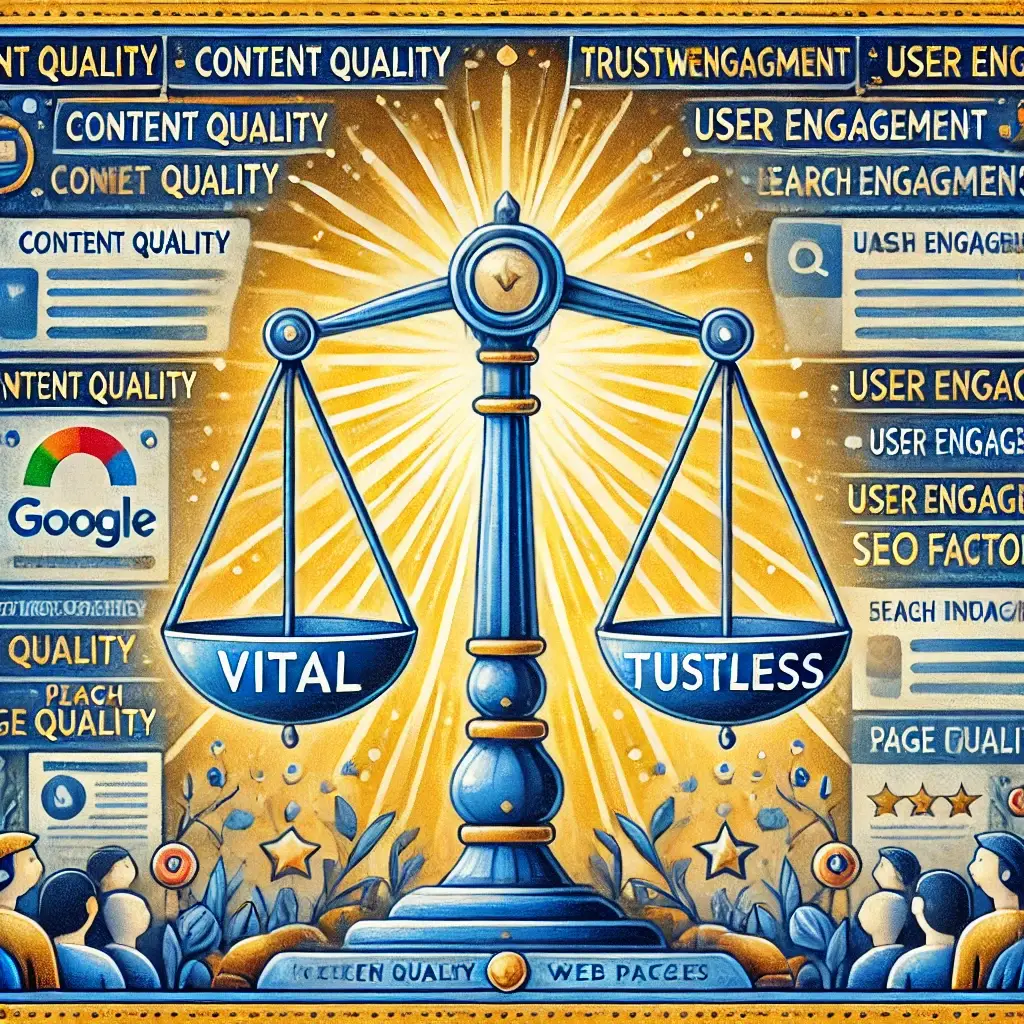
What Makes a High-Quality Page? (Vital vs. Useless Pages)
What This Blog Will Cover:
1️⃣ How Google Defines Page Quality – What factors make a page useful or useless in search results.
2️⃣ Google’s Page Quality Ratings – Breakdown of Vital, Useful, Relevant, Slightly Relevant, and Useless pages.
3️⃣ Key Factors for High-Quality Pages – Content depth, credibility, E-A-T, user engagement, and UX signals.
4️⃣ What Low-Quality Pages Get Wrong – Thin content, misleading titles, outdated information, spammy design.
5️⃣ Examples of Good vs. Bad Pages in Search – How Google evaluates real pages for ranking decisions.
6️⃣ How to Optimize Your Page for High Quality – Actionable SEO & content improvements to increase rankings.
What is a High-Quality Page According to Google?
Google’s ranking system doesn’t just focus on keywords—it evaluates page quality to determine whether content is valuable to users. The Search Quality Guidelines provide a rating scale for how useful a page is based on content quality, trustworthiness, and user experience.
A high-quality page should: ✔️ Satisfy user intent (Answer the query fully) ✔️ Provide accurate and in-depth information ✔️ Have a strong E-A-T (Expertise, Authoritativeness, Trustworthiness) ✔️ Offer a great user experience (UX) ✔️ Avoid spammy or misleading content
Google categorizes pages into five main ratings:
1️⃣ Vital Pages (The Best of the Best) 🌟
- The highest rating for a page that perfectly satisfies a query.
- Typically applies to official sources, major brands, or highly authoritative content.
- Example: Wikipedia’s page on Einstein or the official government COVID-19 page.
✔️ How to Achieve a Vital Rating?
- Ensure your content is the most authoritative and complete source on the topic.
- Use strong, verifiable sources and expert contributions.
- Optimize for clarity, depth, and ease of use.
- Highly relevant, well-researched, and provides strong value to users.
- Not necessarily an official source but offers unique insights or detailed explanations.
- Example: A well-researched blog post on “How AI is Changing Marketing.”
✔️ How to Make Your Page More Useful?
- Offer unique insights, not just regurgitated information.
- Improve readability with structured headings, bullet points, and visuals.
- Enhance credibility with expert references and data.
- Content partially answers the query but lacks depth.
- Some useful information but not comprehensive.
- Example: A short, generic article on “Best Workout Tips” that lacks expert insights.
✔️ How to Improve a Relevant Page?
- Add more depth and practical examples.
- Make content more engaging (videos, infographics, step-by-step guides).
- Strengthen internal linking to direct users to in-depth resources.
- Only tangentially related to the query.
- Might contain some relevant words but doesn’t actually answer the intent.
- Example: A page discussing “best running shoes” when the query is about “best running techniques.”
✔️ How to Fix This?
- Refine content to match search intent better.
- If targeting the wrong audience, adjust keyword strategy.
- Spammy, misleading, or low-value content.
- Often keyword-stuffed, overly promotional, or plagiarized.
- Example: A webpage titled “Best Laptops 2024” that just lists random Amazon links with no reviews.
⚠️ Google Penalizes These Pages
- Keyword stuffing
- Duplicate content
- Clickbait headlines with no useful information
- Deceptive, AI-generated fluff content
✔️ How to Recover From a Useless Rating?
- Rewrite the content to provide genuine value.
- Remove spammy tactics and focus on user experience.
- Use real data, citations, and expert input.
🚀 Google’s Page Quality Checklist for Ranking Higher: ✔️ Understand Search Intent – Create content that directly addresses user queries. ✔️ Improve E-A-T – Build credibility, authority, and trust through expert-backed content. ✔️ Provide Actionable Value – Make content informative, structured, and user-friendly. ✔️ Enhance Readability – Use headings, bullet points, and visuals to improve engagement. ✔️ Avoid Over-Optimization – Don’t keyword stuff. Instead, focus on relevance.
🔍 Example 1: “Best SEO Practices for 2024” ✅ High-Quality Page:
- In-depth, well-researched article
- Clear structure with expert quotes & real-world examples
- Visuals & data-driven insights
❌ Low-Quality Page:
- List of outdated tactics with no explanations
- Poor formatting & lots of ads
- No citations or original research
By following Google’s best practices, your content will be rated higher by both human search raters and Google’s ranking algorithms.
Understanding what makes a page high-quality is crucial for SEO success. Google rewards sites that deliver real value, match search intent, and maintain credibility.
Stay tuned for our next blog: Google’s Page Quality Rating: Key Factors Explained! 🚀
📞 Call: 9915356336
📧 Email: vikasamrohi@gmail.com
Tag:content trustworthiness, e-a-t seo, google page quality rating, google ranking factors, google search rankings, high-quality content, page quality guidelines, search engine optimization, search intent optimization, seo best practices, seo content strategy, spammy content penalty, thin content seo, user experience seo, website authority
